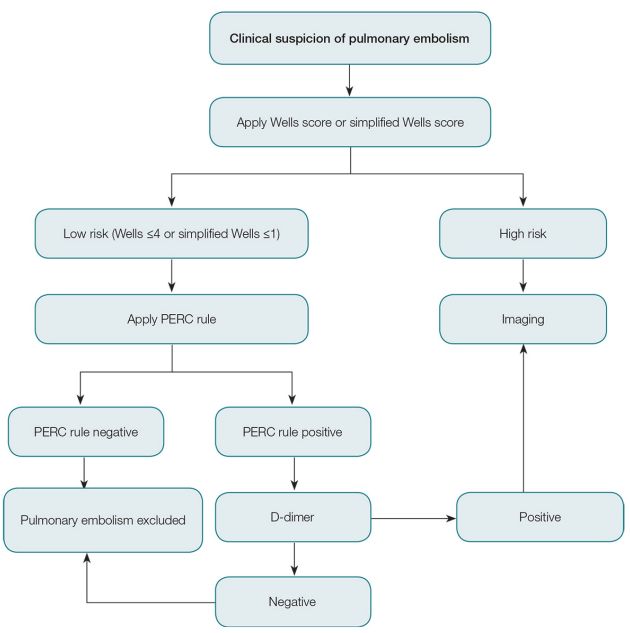PULMONARY EMBOLISM-DETECTION ALGORITHM
SUMMARY
1. Wells Criteria: if negative (≤ 4), PERC next, if negative, PE excluded.
2. If PERC positive, proceed to D-Dimer.
3. D-Dimer: useful to exclude PE. Positive result in a low risk patient is more likely to be a false positive.
4. Troponin and BNP: often elevated in submassive PE and massive PE. Could add weight to decision to treat with thrombolysis.
5. Fever, leucocytosis and elevated CRP are often present with infarction.

Image: Doherty. S, Pulmonary Embolism: An update, RACGP
Reference(s)
Wilkinson, I., Furmedge, D. and Sinharay, R. (2017). Oxford handbook of clinical medicine. Oxford: Oxford University Press. Get it on Amazon.
Feather, A., Randall, D. and Waterhouse, M. (2020). Kumar And Clark’s Clinical Medicine. 10th ed. S.L.: Elsevier Health Sciences. Get it on Amazon.
Hannaman, R. A., Bullock, L., Hatchell, C. A., & Yoffe, M. (2016). Internal medicine review core curriculum, 2017-2018. CO Springs, CO: MedStudy.
Therapeutic Guidelines. Melbourne: Therapeutic Guidelines Limited. https://www.tg.org.au [Accessed 2021].